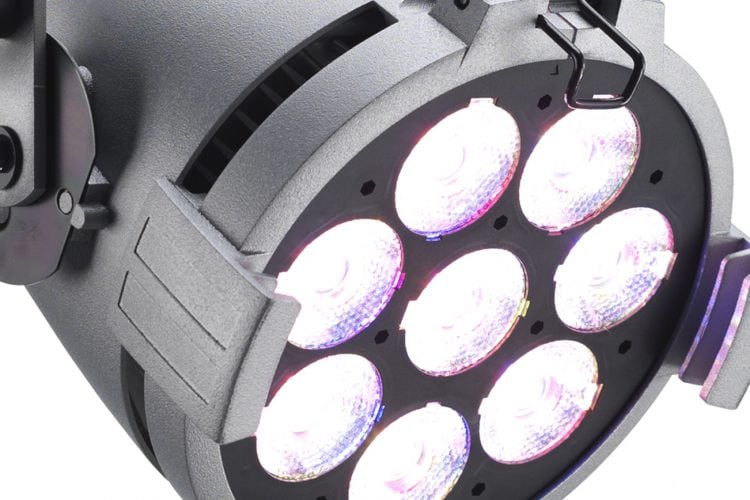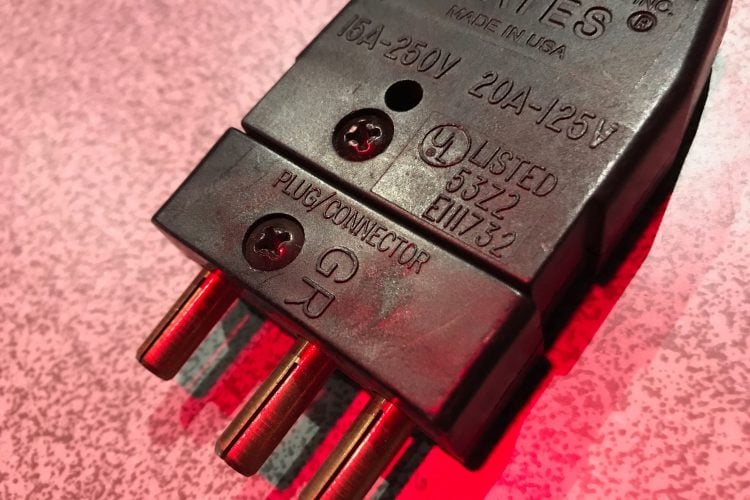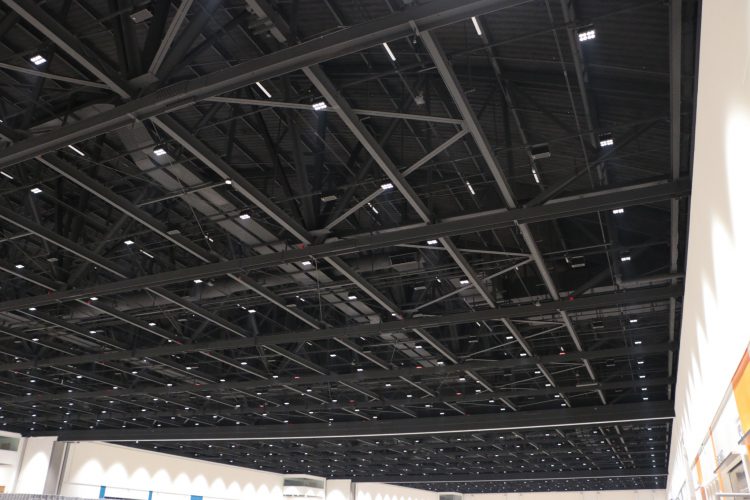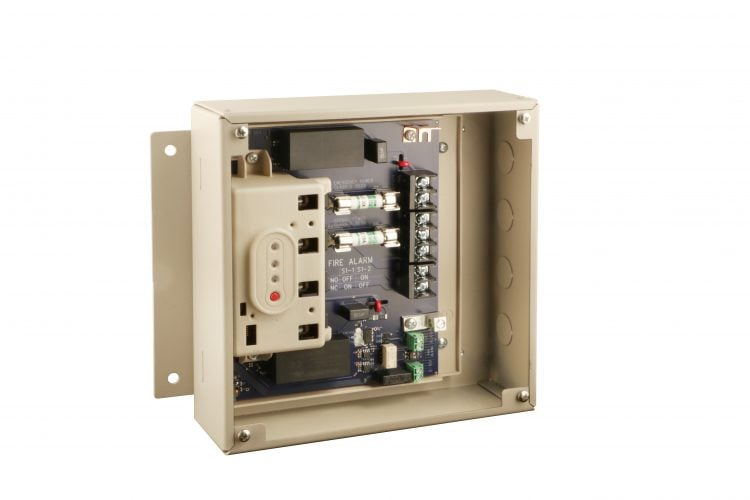Recent changes in the 2023 US National Electrical Code and UL standards have significantly changed the rules for emergency lighting in the US. We explore those changes in this blog.
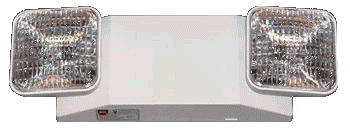 For many years, emergency lighting in all kinds of facilities was accomplished with a familiar battery-powered device, known as “unit equipment.” Architects and designers gritted their teeth and dialed down their aesthetic expectations, since there was not much choice in code-compliant emergency lighting solutions except ugly, uglier, and ugliest.
For many years, emergency lighting in all kinds of facilities was accomplished with a familiar battery-powered device, known as “unit equipment.” Architects and designers gritted their teeth and dialed down their aesthetic expectations, since there was not much choice in code-compliant emergency lighting solutions except ugly, uglier, and ugliest.
Over time, the pressure rose from the design community to get rid of this type of equipment and replace it with lighting fixtures (or “luminaires” in Code-speak) that were identical to luminaires used in a space for normal lighting. The argument was compelling: “Why can’t I use the same luminaires for emergency lighting and power them from a central generator or UPS?” This pressure was accelerated by the dominance of efficient LED luminaires that consumed far less power than tungsten units and could easily provide the required emergency illumination levels. As additional motivation, use of LED luminaires and a central emergency power source eliminated costly maintenance of traditional battery powered unit equipment.
To keep up with this trend, significant changes occurred in the National Electrical Code® (a registered trademark of the National Fire Protection Association) and the UL 924 standard covering emergency lighting and power equipment. Two key NEC sections were modified in the 2023 edition. First, a definition was modified:
Emergency Luminaire, Directly Controlled. (Directly Controlled Emergency Luminaire)
A luminaire supplied by the facility emergency power system and with a control input for dimming or switching that provides an emergency illumination level upon loss of normal power.
Note: See ANSI/UL 924, Emergency Lighting and Power Equipment, for information covering directly controlled emergency luminaires.
The definition tells us that any luminaire with a control input that is used for emergency lighting qualifies as a Directly Controlled Emergency Luminaire. That control input might be DMX512, 0-10 volts, DALI, or even a 120-volt control input used to sense failure of normal power.
Next, the section governing the requirements for Directly Controlled Luminaires was modified:
700.24 Directly Controlled Emergency Luminaires.
Where emergency illumination is provided by one or more directly controlled emergency luminaires that, upon loss of normal power, respond to an external control input to establish the required emergency illumination level, such directly controlled emergency luminaries shall be listed for use in emergency systems. Luminaires that are energized to the required emergency illumination level by disconnection of their control input by a listed emergency lighting control device shall not be required to be listed for use in emergency systems.
Section 700.24 tells us that we can’t use just any luminaire with a control input for emergency lighting, it has to be specifically Listed for use in emergency systems. We can then refer back to the informational note in the definition above and determine that a Directly Controlled Emergency Luminaire must comply with the UL 924 Standard for Emergency Lighting and Power Equipment.
But the last sentence of 700.24, which is new for 2023, creates a new exception to the UL 924 Listing requirement: If the luminaire is energized by disconnection of the control input upon loss of normal power by a Listed emergency lighting control device (ELCD), the luminaire itself does not need an emergency listing under UL924. Examples of such ELCD’s are Automatic Load Control Relays (ALCR’s) and Branch Circuit Emergency Lighting Transfer Switches (BCELTS’s).
It's important to note that only those luminaires with 0-10V control inputs are guaranteed to go to full upon disconnection of the control input. Other types of luminaires with DMX512 or DALI control inputs may require their internal configuration to be set correctly to go to full upon disconnection of their control input.
The new exception in 700.24 removes a conundrum that the lighting industry has been dealing with for a number of years: very few directly controlled luminaires being used for emergency lighting actually had a UL924 emergency listing, especially those using 0-10V control inputs.
Additionally, the UL924 emergency listing of the luminaire remains a requirement if it is being energized by an active control signal from a Listed ELCD. For instance, if you are using an ETC DMX Emergency Bypass Controller (DEBC) to turn on a DMX luminaire upon loss of normal power, that luminaire still needs a UL924 emergency Listing. Selected luminaires in the ETC product line have such an emergency Listing.
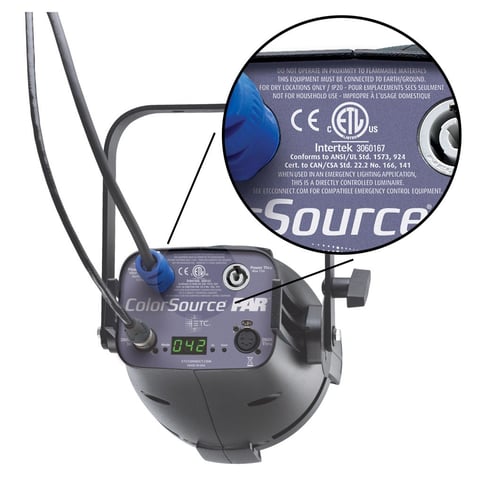 Which ones? It’s easy to determine, because as these additional UL924 Listings occur, that will be reflected in revised data sheets and labels. Note the revised wording on the ColorSource PAR: “Conforms to ANSI/UL Std. 1573, 924. WHEN USED IN AN EMERGENCY LIGHTING APPLICATION, THIS IS A DIRECTLY CONTROLLED LUMINAIRE.”
Which ones? It’s easy to determine, because as these additional UL924 Listings occur, that will be reflected in revised data sheets and labels. Note the revised wording on the ColorSource PAR: “Conforms to ANSI/UL Std. 1573, 924. WHEN USED IN AN EMERGENCY LIGHTING APPLICATION, THIS IS A DIRECTLY CONTROLLED LUMINAIRE.”
The UL924 standard also contains another recent significant change: the standard now allows cord-and-plug connected emergency luminaires in high bay applications where they cannot inadvertently get unplugged.
Originally published Nov, 2017. Updated April, 2023.
Do you have questions about Direct Control, or electrical codes or standards as they apply to your fixtures or installations? Let us know in the comments, or email us at blog@etcconnect.com


